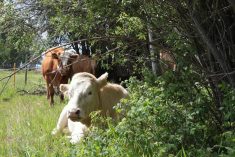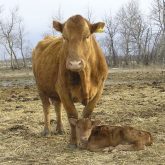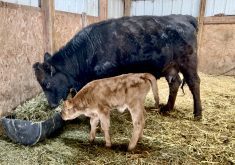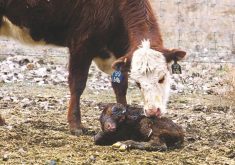For the vast majority of you, calving is underway or will be shortly, so a quick review of a few points may lead to more live calves and minimizing disease problems.
First, review your list of calving supplies and make sure you have extra on hand. You know what you have needed in the past, items ranging from lubricant, surgical soap and Virkon for disinfection to setting up cameras. If you don’t have a camera, some of these small, easy-to-set-up ones used in households for security work well for a calving pen. They can be real step savers.
Read Also

Mosquito-borne virus could be devastating to sheep breeding operations
Cache Valley virus, a mosquito-borne disease that infects small ruminants, could be a devastating hit to small operations.
Also, have an adequate supply of colostrum replacement on hand such as HeadStart to use in any situation where there is a suspected lack of consumption (such as a weak calf, twins or if the cow is a poor milker or has mastitis).
The big three nemesis are scours, pneumonia and navel infection. They are often a next-year management issue, but if you have had issues in the past, hopefully your veterinarian and you have worked out a plan to reduce the incidence. With all three, more biosecurity helps — this and ensuring colostrum uptake go a long ways.
Many clinics across Western Canada are recommending and prescribing toltrazuril for the prevention of both cryptosporidiosis and coccidiosis in herds that have problems with either of these protozoal diseases. Cryptosporidiosis is a diarrheal disease of young calves up to about three weeks of age. Even though cryptosporidiosis is not there as a label claim, it appears effective as a treatment/preventive.
For pneumonia, obviously again colostrum intake is key, but also warm, well-bedded areas in calf sheds prevent chills and environmental stress. As well, many producers are using intranasal vaccines against both the respiratory viruses and bacteria. Even when caught early, some clinical diseases become chronic, so the more we can prevent them, the better. If you get a clinical case, taking the temperature and using a long-acting effective antimicrobial recommended by your veterinarian are the way to go.
With navel infection, again, biosecurity is key. You want the calf to be born in a clean environment and so make sure the sleds or carts used to transport them are cleaned and disinfected regularly. Remind yourself: What is the first environment the calf’s navel comes in contact with?
I do not like handling the navel at all and we need more research into what triggers navel infections in some calves. During my practising days, the incidence was most definitely going down and that is with very few producers treating the navel with anything at birth. I have seen some herds where metaphylactic antimicrobials are used but with good cleanliness practices, the need for antimicrobials is definitely going away. (Some of the newer antimicrobial sprays may be effective if done quick enough after birth but this is all open for debate.)
Many of you are shopping for bulls and attending bull sales these days (which are getting back to normal with many of the COVID rules being relaxed).
Selection of a bull based on phenotype, birth weight and all the growth EPDs are what most look at. But also check into the health protocols of the herd that the bull is coming from. This can lead to a good conversation on vaccination protocols and other management procedures — ones you may implement in your own herd. You need to talk with each other to get the ideal vaccination protocols for your herd in your geographic area, and timing can be a critical component as well. These practices and measures need to be continually reviewed.
Bear in mind that bulls from purebred herds may have some different circumstances because they may have a market to the EU and need to be IBR negative. They also may be testing for BVD Johne’s disease and that often will be indicated in the catalogue. Some are doing ultrasounding for carcass information or are testing for leptin (the fat gene).
This is all great information to know, especially with specific breeds. Visiting at bull sales allows you to network and collectively makes the industry stronger, that’s for sure. Ask good questions and find out what your fellow producers have been doing the last couple of years. It never hurts to ask questions, and we can always get good, well-thought-out, practical ideas from each other.
That is why always when listening to a presentation we can often learn as much from the answers to the questions at the end. Lots of information is available between publications such as this one and the Beef Cattle Research Council website and those of the CCA and provincial cattle associations. And you can also get help from the various professionals you use, such as veterinarians, nutritionists, and foot trimmers.
We have all heard of the severe shortage of veterinarians so have a good to great working relationship with your vet. Then there will never be a question if service is to be provided for your farm.
Have a great calving season everybody.
















